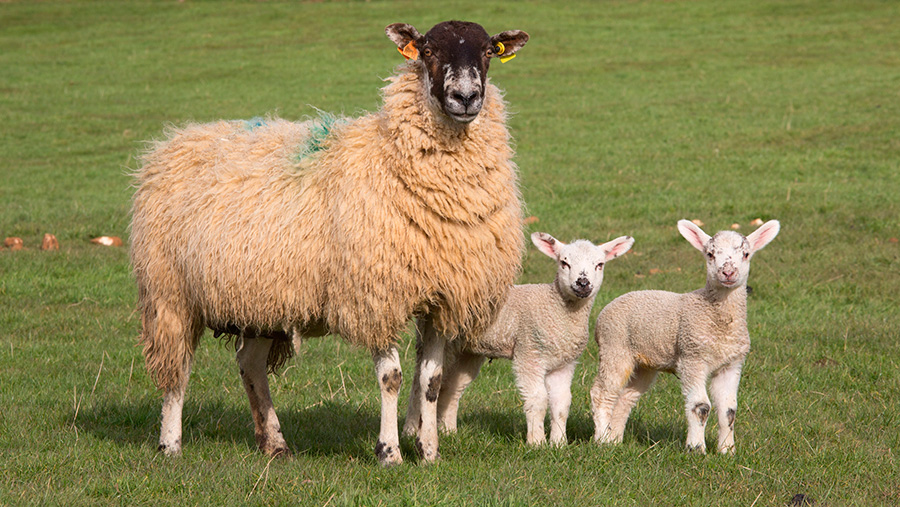9 tips for minimising lamb production costs
 © Tim Scrivener
© Tim Scrivener As margins get squeezed, keeping a lid of lamb production costs is key to allow for profits to be made.
Below, AHDB knowledge transfer senior manager Katie Thorley and Farming Connect technical officer Catherine Nakielny set out a nine-step guide on how to minimise costs in your sheep enterprise.
1 Account for all mortality
Some lamb loss is inevitable but it needs to be recorded and monitored year-on-year and a cost to the business calculated for extreme losses.
Flocks should not have a mortality rate above 14% between scanning and sale. Noting at what stage the loss occurred will help to identify the main cause and management decisions can be implemented to reduce losses the following season.
See also: Sheep sector on brink of revised sheep splitting rules
2 Don’t assume grazing land costs nothing
Grazing could be let out and yield a higher income than some sheep production systems. It may have been better from a financial viewpoint to have let land rather than use it as input for the sheep enterprise.
3 Avoid keeping lambs too long
Every extra day a lamb is kept incurs grazing costs and if creep feeding this is an added cost. It is important to identify your market and produce lambs to suit it.
It may be more cost effective to sell earlier at 38kg than keeping a lamb on to 45kg. Frequent weighing and handling, where possible at one- to two-weekly intervals close to marketing, will help to identify lambs at the optimum spec for the market.
4 Don’t ignore ewe condition scores
It is vital that ewes are not losing too much condition in the rearing phase; they shouldn’t lose more than one condition score as it takes six to eight weeks on good grazing to regain condition.
If ewes are lean, wean early to give the ewes chance to regain condition and prioritise the best grazing for weaned lambs.
Getting lambs away as soon as they reach target specification will free up grazing and give the ewes a chance to regain condition.
5 Judge the nutritional value of forage as well as the cost
Many sheep farms leave silage-making later than dairy farms to gain extra bulk in the clamp or more bales. This can prove costly.
A later cut may mean the feed value is much lower and extra quantities of expensive concentrate are needed to balance the ration.
6 Cut costs don’t cut corners
It is important not to adopt a cut, cut, cut approach if it is at the expense of efficient performance. Feeding a cheaper creep may be a false economy if it means lambs take many more days to finish.
Paying a bit extra for a better quality feed can result in a more efficient liveweight gain overall. Check the quality v price of the ewe and lamb feeds; there is normally a reason one is a lot cheaper.
7 Invest in flock health
Scrimping on animal health costs can reduce valuable output. For example, a low but persistent level of abortion, can cost an enterprise thousands in lost production.
It would be better to work alongside the vet to derive a flock health plan that might include a vaccination programme to eliminate the abortion problem. Producers should be working with their vet to aid flock health rather than just using them as a fire-fighting service.
8 Test wormers work
Worm burdens are a key area for incurring wasted cost. Effective wormers should be used and tested using faecal egg counts. Failing wormers can cost two weeks worth of liveweight gain across the flock before any outward signs are visible.
9 Use benchmarking and discuss results
There are a number of benchmarking tools and cost calculators available. These will help show how the business is performing and identify both weak areas and where the business is doing well.
Armed with the statistics, it will then pay dividends to talk to consultants and join farmer discussion groups to pass on experiences and glean good ideas and tips on cutting costs and maximising profit.
